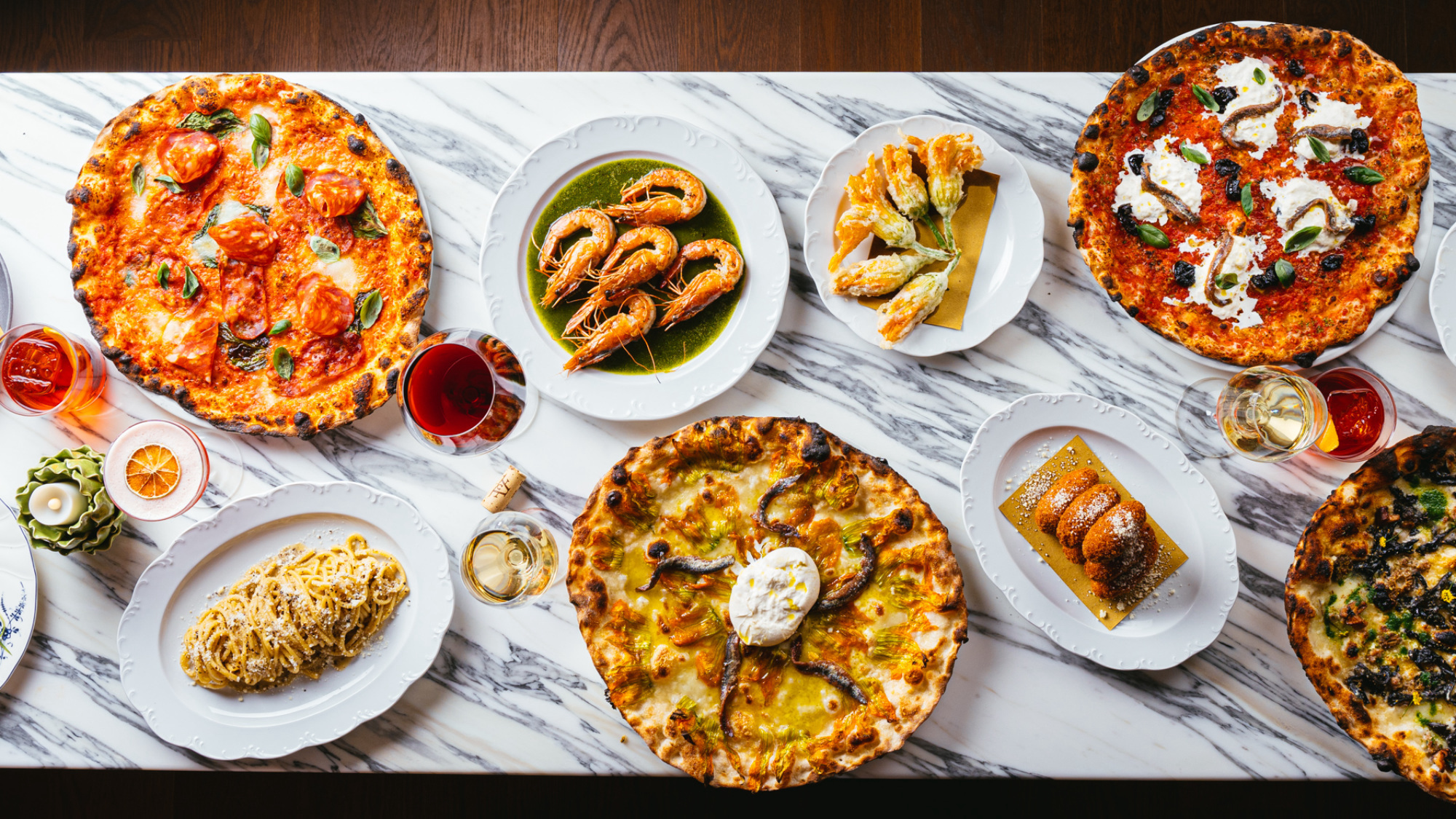
How Mother Wolf’s Evan Funke Puts His Stamp on Roman Food, In Five Dishes
Although Evan Funke’s name has been synonymous with Italian food in Los Angeles for some time, his elegant new Hollywood restaurant Mother Wolf marks a departure for the chef: Instead of picking and choosing from multiple regions like he does at his beloved Venice trattoria Felix, his menu at Mother Wolf is laser-focused on the cuisine of the Eternal City.
“In Rome, there’s this fantastic juxtaposition between the modern city and the pastoral community that exists today. It’s a living museum. I find that so spectacularly magnetic,” Funke says. “Even though their cuisine has been informed by surrounding regions, Romans are very proud of what is and what is not Roman.”
Although he pays homage to the history and lore behind Roman cuisine — Funke is passionate about culinary research — his approach is to respect tradition while making each dish his own. “I read somewhere that if a story for a dish doesn’t exist, Italians will make it up. They’re interested in preserving what they hold dear,” Funke says. “I love being part of that storytelling.”
Mother Wolf, named for the mythological Lupa Capitolina that’s immortalized in statues all over Rome, also tips its hat to tradition in the form of old Hollywood glitz. Housed in the Art Deco-era Citizen News building, the restaurant oozes glamor: Think imported Murano glass chandeliers, marble tabletops and bars, waitstaff in waistcoats, and Gio Ponti-inspired seating. That elegance doesn’t necessarily translate to stuffiness, though. On any given night, you might eat Funke’s housemade pastas to a soundtrack of 80s and 90s hip-hop.
“Felix is a trattoria, while Mother Wolf is this grand room that feels very adult and luxurious — but I’m a sucker for a great song and a great beat. It’s still an Evan Funke restaurant,” he says.
Here’s how Funke is interpreting Roman cuisine, in five dishes.
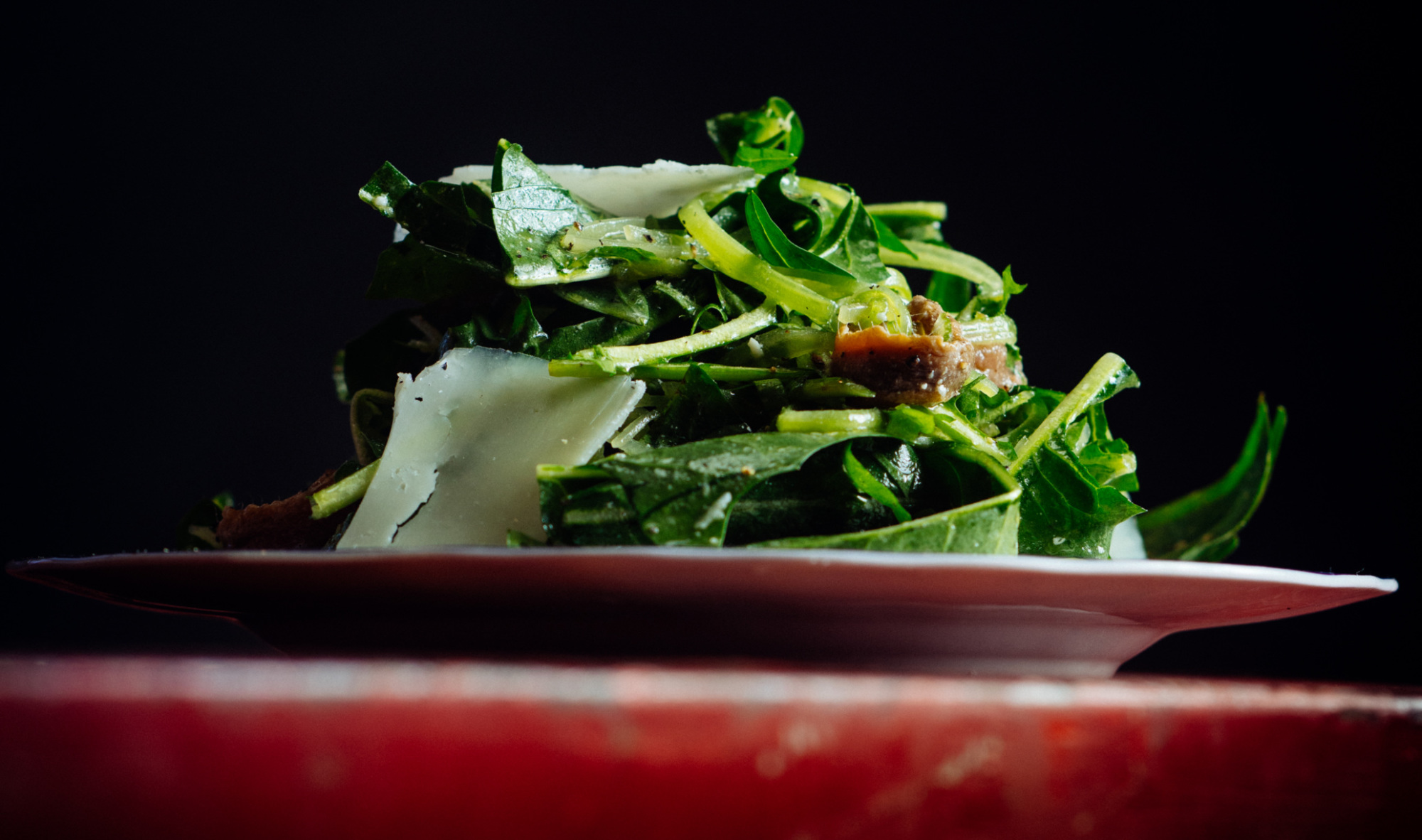
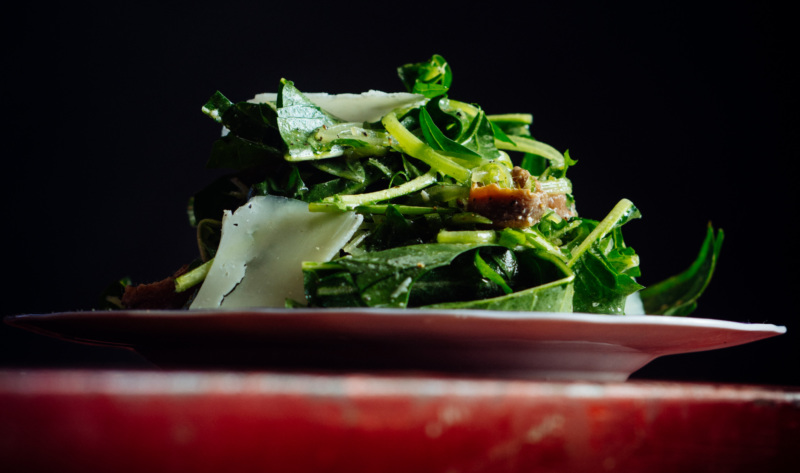
1. Puntarella Alla Romana
“Five years ago, you couldn’t find puntarella, the iconic chicory from Catalonia, in Los Angeles. When I would travel to Italy, I’d bring seeds back — both legally and illegally — and try to find farmers who were willing to grow it. You can now find greens like puntarella, Treviso, and Castelfranco at the farmers markets.
A puntarella salad is both a very quintessential Roman dish and a very wintery dish. It’s such a beautiful vegetable; it has chunky spears that almost look like super-fat asparagus, with long leaves shooting out. In Italy, it’s incredibly bitter, but the water here in L.A. has softened up the taste.
We dress the puntarella in a very simple anchovy vinaigrette made with anchovies from Chitarra, and finish it with a cheese called Caciotta Romana. It’s a soft, super-creamy sheep’s milk cheese. The cheese is not traditional, so this is an example of a dish that I’ve respectfully altered.”

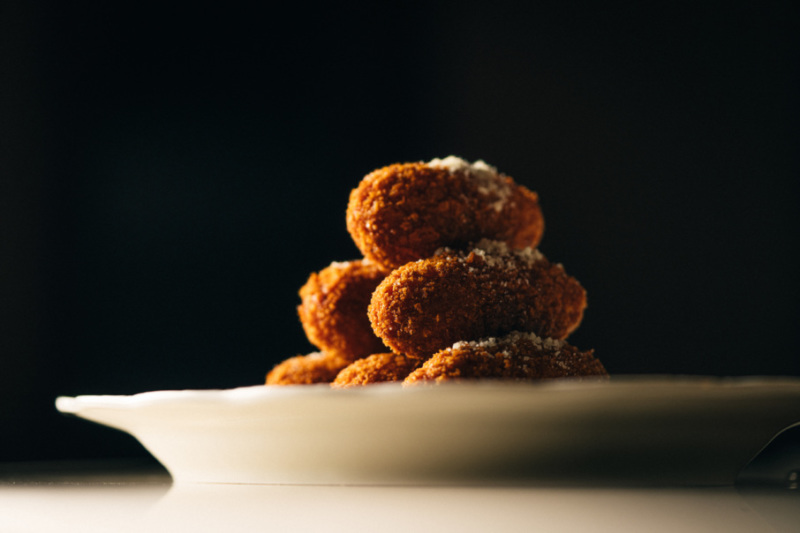
2. Supplì al Telefono
“When it comes to fried rice croquettes, think of arancini as the language, while suppli is the Roman dialect. [Suppli are deep-fried rice balls filled with tomato ragu and mozzarella cheese.] The root of ‘supplì’ comes from a French word for ‘surprise,’ and then ‘al telefono’ refers to when you open them and the mozzarella cheese stretches out like a telephone line.
I’m a huge fan of Amatriciana sauce — it tastes like spicy Cheetos. So when we cook the rice for our supplì, we render guanciale until it’s crispy and toss in some onions, then render the rice in the guanciale fat. We add some white wine and tomato and cook the rice in the style of risotto. We then shape the rice into small fingers filled with mozzarella di bufala, and very simply bread and fry them.”

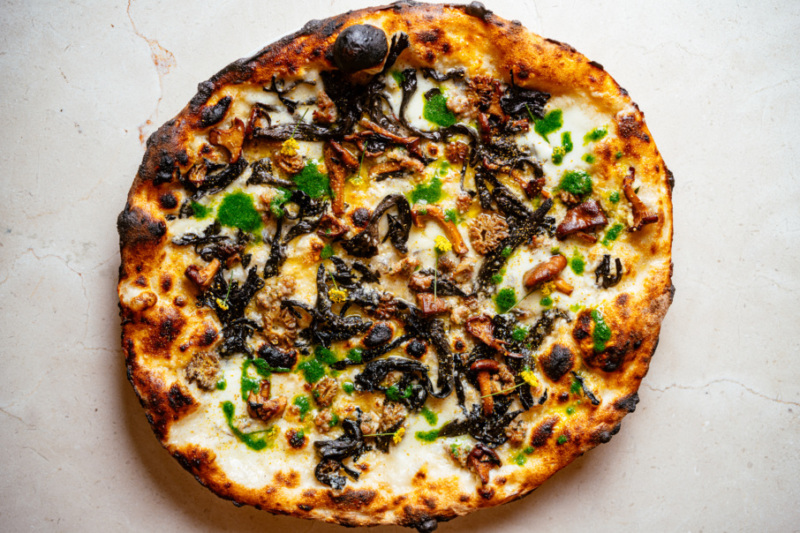
3. Pizza Boscaiola
“There are a few different styles of pizza in Rome: There’s cracker-y pizza tonda (thin-crusted round pies), al mattarello (pizzas stretched with a rolling pin, so they’re super-crispy), and the more contemporary style Jacopo Mercuro is doing at 180g (long-fermented dough stretched by hand, resulting in a slightly chewier pie).
I’ve styled Mother Wolf’s pizza differently because mine is done in a wood-fired oven. I was going for the delicate crispness of a Dorito. I love the char, and that smoky quality that a wood fire brings to a pizza. ‘Boscaiola’ translates to ‘woodman’s style,’ which can mean anything from tuna and mushrooms to sausage and mushrooms, depending on whose grandma you’re talking to. We dress the Boscaiola with wild mushrooms, housemade fennel sausage, and fior di latte cheese, then we sprinkle it with wild fennel pollen to give it a floral quality. It’s finished with a little bright green garlic salsa verde.”
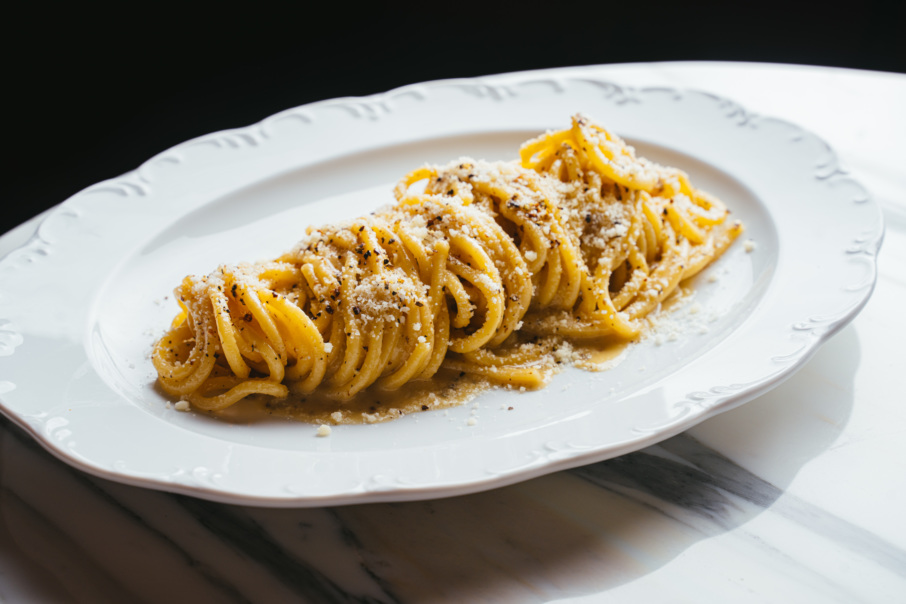
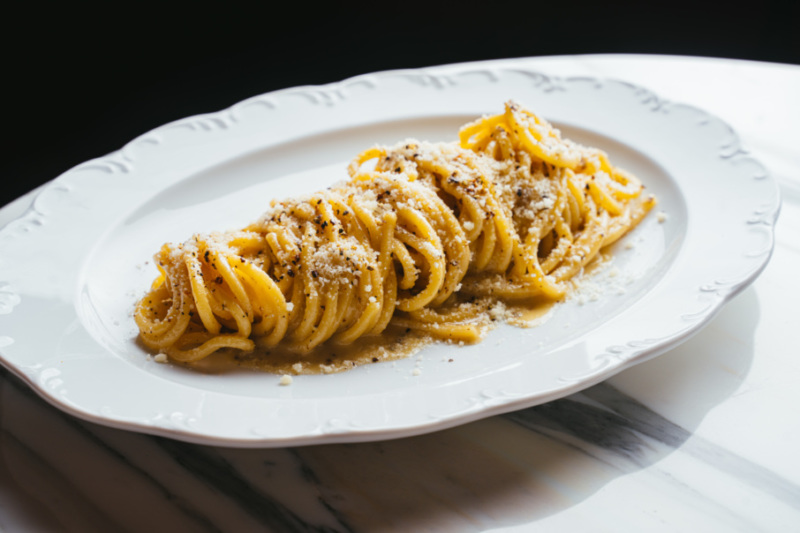
4. Tonnarelli Cacio e Pepe
“I hold cacio e pepe close to my heart. When I took over Rustic Canyon in 2007 or so, no one was really serving it. So I became like a drug pusher, sending out samples, and it started to take off.
It’s a dish where the simplicity belies the technique behind it. The myth is that cacio e pepe was born in the pastoral lands in central Italy. The shepherds carried dried pasta, black pepper, and salted pecorino cheese to prepare this dish in the field. But from what I’ve read, the dish gained a foothold in the ‘50s and ‘60s, when it was served very, very dry as a bar snack with a ton of pepper and cheese, so people would eat it and drink more wine. It wasn’t until much later that chefs made it creamy.
What sets my version apart is the toasting of the black pepper. You start with a pan that’s hot enough to bring the natural oils of the pepper to the surface, then hit it with a fat that will extract and infuse the natural flavor of the pepper. Then we add water that’s been fortified with dozens of pastas, so there’s a really high starch level. I tell my cooks ‘you gotta f-ck it up’ and really go crazy creating centrifugal force with tongs or a tweezer so that it forces the starches into the water. Once it reduces, we add the cheese, but not over the heat. There’s a really fine line.”
5. Scottadito (Grilled Lamb Chops)
“Scottadito (‘burned fingers’) is one of those dishes that you’ll find on every Roman menu, often done with rib meat. The story behind the name is that you’re so hungry you can’t wait to eat it. To make ours, we grill four or five New Zealand or Australian lamb ribs. For the base of the dish, we over-braise chicories and char them a little bit on the grill. Then we baste the meat with a little bit of butter in the end, browning it and tossing in some salsa verde for this really herbaceous quality.”
Karen Palmer is a Los Angeles-based food writer who spends most of her free time thinking about pizza and pasta. Follow her carb-rich lifestyle on Instagram. Follow Resy, too.
















